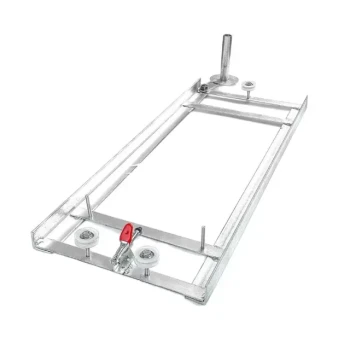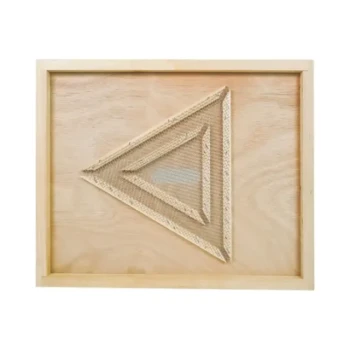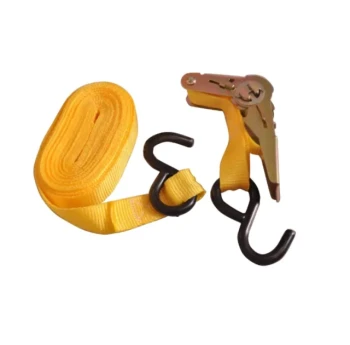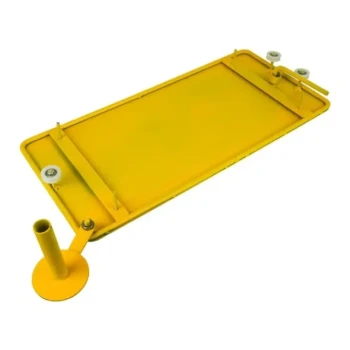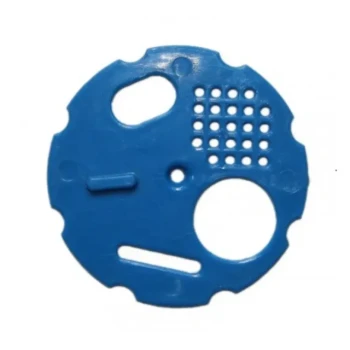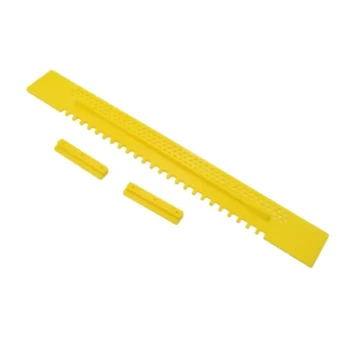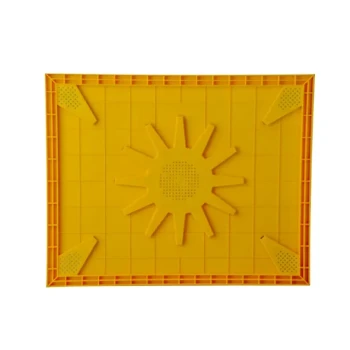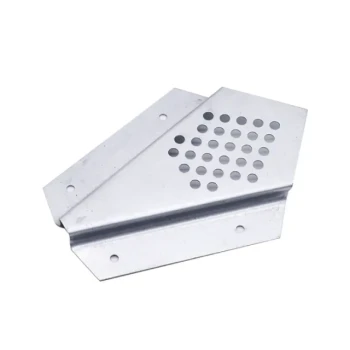To reduce moisture in a beehive, the most effective methods are ensuring proper top ventilation, installing a dedicated moisture board, and elevating the hive off the ground with a stand. These strategies work together to allow the warm, moist air generated by the bees to escape while preventing external water from entering.
The central challenge isn't moisture itself, but condensation. Your goal is to create a system where warm, humid air can exit the hive before it cools and drips back down as cold water onto the bees, which is especially dangerous during winter.
The Core Problem: Condensation's Chilling Effect
Bees generate a significant amount of heat and moisture as they metabolize honey to stay warm. This warm, humid air naturally rises within the hive.
How Condensation Forms
When this rising air hits the cold inner surface of the hive cover, it rapidly cools. This temperature change forces the water vapor to condense into liquid droplets.
The Danger to the Cluster
These cold water droplets then drip down onto the bees clustered below. This chilling effect can be lethal, as wet bees cannot effectively regulate their temperature and may freeze or become susceptible to disease.
Key Strategies for Moisture Management
A multi-pronged approach is the most reliable way to maintain a dry, healthy hive environment, particularly through the challenging winter months.
Ensure Proper Ventilation
Ventilation is the primary mechanism for removing moist air. A small opening at the top of the hive creates a "chimney effect," allowing the warm, humid air to escape before it can condense.
Utilize a Moisture Board
For many climates, ventilation alone is not enough. A moisture board, often made of absorbent material, is placed at the very top of the hive, above the inner cover.
This board absorbs the rising moisture like a sponge, wicking it away from the bees. The moisture is then able to slowly dissipate without causing harmful drips inside the hive.
Elevate the Hive
Raising your hive off the ground with a hive stand is a simple but critical step. This prevents ground moisture from seeping into the hive's bottom board.
It also protects the hive from rain splashes, which can introduce significant unwanted water and promote mildew or rot.
Add Insulation (Carefully)
Proper insulation, especially on the top of the hive, keeps the inner surfaces warmer. A warmer surface reduces the likelihood of condensation forming in the first place, working in tandem with your ventilation strategy.
Understanding the Trade-offs: Ventilation vs. Heat Loss
Managing moisture requires a careful balance. While ventilation is crucial for removing moisture, it can also allow precious heat to escape.
The Risk of Over-Ventilation
Creating too large of an opening can create a draft. This forces the bee cluster to consume more honey and work harder to maintain their core temperature, adding unnecessary stress to the colony.
Finding the Right Balance
The goal is controlled airflow, not a draft. A small upper entrance, combined with a moisture board and top insulation, is often the most effective and efficient solution. It allows moisture to escape without causing significant heat loss.
Making the Right Choice for Your Goal
Your specific strategy should be adapted to your climate and beekeeping goals.
- If your primary focus is surviving cold, harsh winters: Prioritize a moisture board combined with top insulation to manage condensation without excessive heat loss.
- If your primary focus is managing humidity in a damp, rainy climate: Ensure your hive is well-elevated on a stand and has a solid, waterproof top cover to prevent external water entry.
- If your primary focus is general hive health in a moderate climate: Start with proper top ventilation, such as a small upper entrance or a slightly propped inner cover, as your main control method.
Ultimately, managing hive moisture is about creating a dry, stable environment that allows your bees to thrive through any season.
Summary Table:
| Method | Primary Function | Key Benefit |
|---|---|---|
| Top Ventilation | Allows warm, moist air to escape | Creates a chimney effect to prevent condensation on the inner cover |
| Moisture Board | Absorbs excess humidity | Wicks moisture away from the bee cluster, acting like a sponge |
| Hive Stand | Elevates hive off the ground | Prevents ground moisture seepage and rain splash-back |
| Top Insulation | Keeps inner surfaces warmer | Reduces the temperature differential that causes condensation to form |
Protect your investment and ensure your colonies thrive through every season. At HONESTBEE, we supply durable, wholesale-focused beekeeping supplies and equipment designed for the demands of commercial apiaries and distributors. From ventilation components to sturdy hive stands, our products are built to help you effectively manage hive moisture and promote colony health.
Contact our expert team today to discuss your bulk supply needs and discover how our equipment can contribute to the success of your operation.
Related Products
- Langstroth Screen Bottom Board for Beekeeping Wholesale
- Australian Pine Wood Langstroth Screen Bottom Board for Wholesale
- Inner Beehive Cover for Beekeeping Bee Hive Inner Cover
- Professional Drop-Style Hive Handles for Beekeeping
- Professional Galvanized Hive Strap with Secure Locking Buckle for Beekeeping
People Also Ask
- How can screened bottom boards assist with pest management in beehives? A Guide to IPM and Varroa Control
- What is the primary function of a screened bottom board in a hive? Enhance Ventilation & Control Varroa Mites
- How should the screened bottom board be used throughout the year? A Guide for Healthy Hives
- What are the benefits of using a screened bottom board in warm or humid climates? Boost Hive Health & Control Pests
- What are the cleaning benefits of using wire mesh in a beehive? Boost Hive Health & Efficiency





